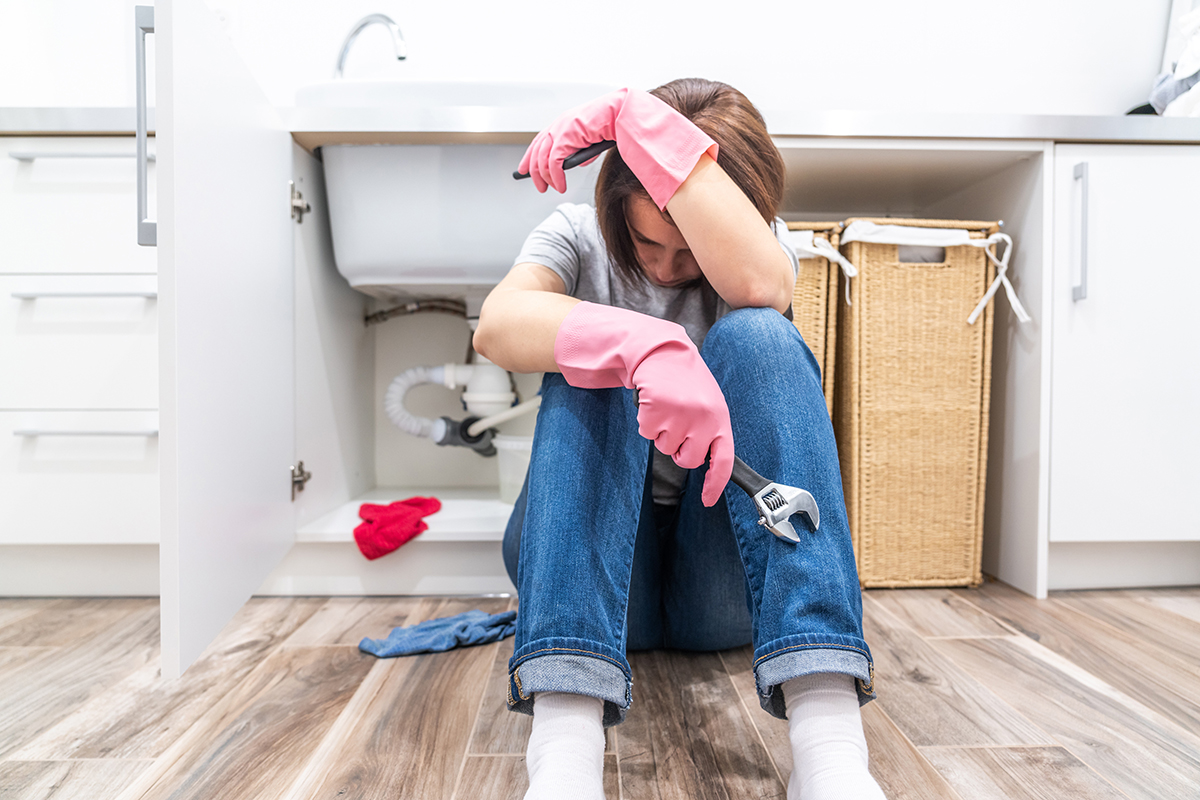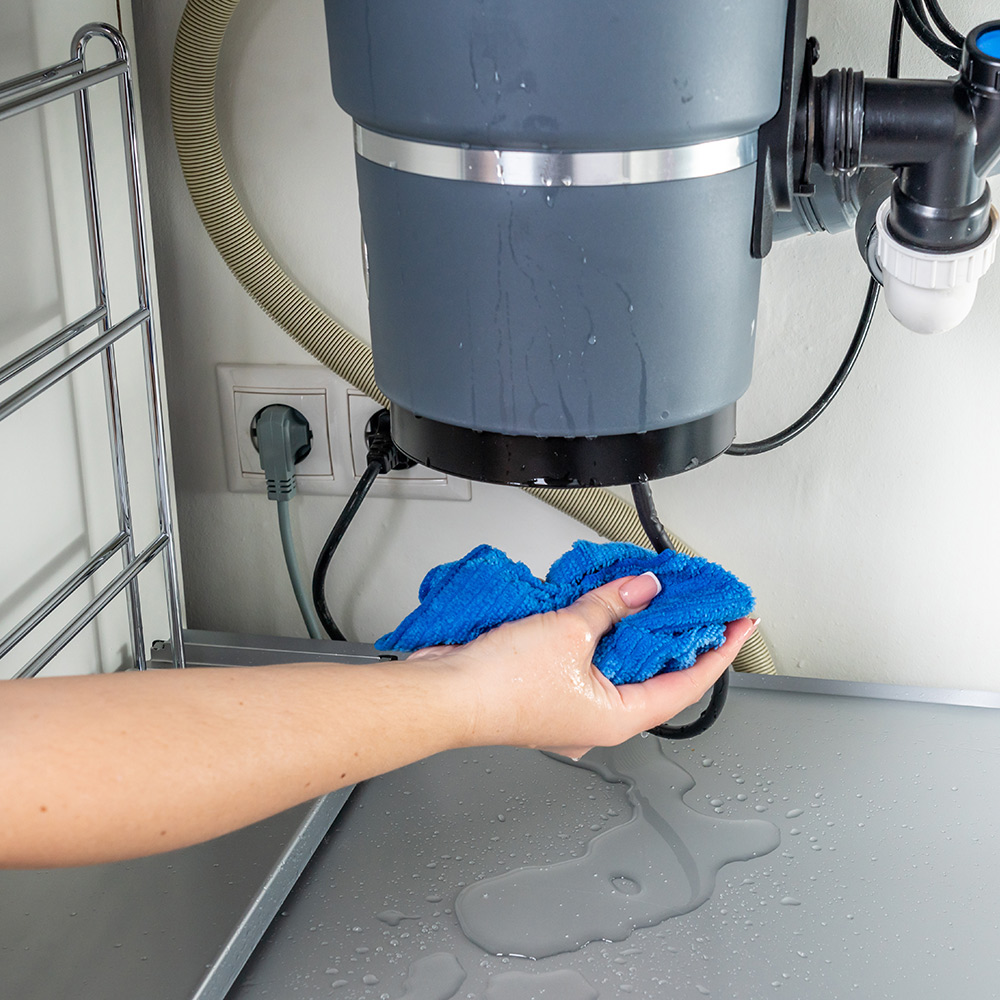Nearly everybody has got their unique opinion on the subject of Why Is .

Waste disposal unit are essential kitchen area appliances that assist in disposing of food waste effectively. Nonetheless, a leaking garbage disposal can be a discouraging and unpleasant issue to deal with. The good news is, several leakages can be taken care of conveniently with a few easy steps. In this short article, we will talk about how to take care of a dripping garbage disposal properly.
Introduction
Garbage disposals are installed under kitchen area sinks and are designed to shred food waste into smaller sized items, enabling it to go through the plumbing system quickly. While these gadgets are generally reputable, leaks can take place in time due to deterioration, loosened connections, or damage to the device.
Typical Causes of Leakages in Garbage Disposals
Worn Seals and Gaskets
Seals and gaskets play a crucial role in preventing water from dripping out of the waste disposal unit. Gradually, these parts can degrade, leading to leakages around the disposal device.
Loose Links
The connections in between the garbage disposal and the pipes system can end up being loosened gradually, creating water to leak out throughout operation.
Splits or Holes in the Disposal Unit
Physical damages to the waste disposal unit, such as fractures or openings in the housing, can also lead to leaks.
Identifying the Resource of the Leakage
Prior to trying to deal with a dripping garbage disposal, it is necessary to determine the resource of the leak. This can usually be done with aesthetic assessment or by performing straightforward examinations.
Visual Assessment
Check the waste disposal unit device meticulously for any kind of indications of water leakage. Pay close attention to locations around seals, gaskets, and link points.
Examining for Leaks
One method to test for leakages is by running water through the disposal device and checking for any type of noticeable indicators of leak.
Tools and Materials Needed for Fixing a Dripping Garbage Disposal
Prior to starting the repair process, collect the necessary devices and materials, including a screwdriver, flexible wrench, plumbing technician's putty, substitute seals or gaskets, and epoxy or patching product for repairing cracks or holes.
Step-by-Step Overview to Taking Care Of a Dripping Garbage Disposal
Shut off the Power
Prior to trying any type of repair services, ensure that the power to the waste disposal unit device is switched off to stop the threat of electrical shock.
Situate the Leakage
Determine the specific area of the leakage and figure out the cause.
Tighten Connections
Make use of a wrench to tighten up any loosened connections between the disposal unit and the pipes system.
Change Seals or Gaskets
If the leak is due to used seals or gaskets, eliminate the old components and change them with new ones.
Patching Fractures or Openings
For cracks or holes in the disposal system, usage epoxy or an ideal patching material to secure the damaged location.
Checking the Garbage Disposal After Repair
As soon as the repair is total, test the garbage disposal by running water through it to make sure that the leakage has been dealt with.
Preventive Upkeep Tips to Prevent Future Leakages
To stop future leaks, it is necessary to perform routine maintenance on your garbage disposal. This consists of keeping it clean, staying clear of putting non-food items or hard objects down the disposal, and occasionally looking for leaks or other concerns.
Final thought
In conclusion, fixing a dripping garbage disposal is a reasonably simple procedure that can be completed with basic tools and products. By complying with the actions described in this write-up and practicing precautionary upkeep, you can keep your waste disposal unit in good working problem and avoid expensive fixings in the future.
HERE’S HOW TO FIX YOUR GARBAGE DISPOSAL
WHAT TO DO IF SOMETHING IS STUCK IN YOUR GARBAGE DISPOSAL
If the impeller won’t turn, there’s probably something stuck in the disposal. It could be a steak bone or peach pit, although plumbers report pulling all sorts of inappropriate objects out of disposals, such as bottle caps or aluminum foil. Make sure power to the disposal is off, and look inside to see if you can see the source of the jam.
Never stick your fingers in a disposal. Pull out anything you see with tongs or pliers.
If the disposal still won’t work, it may be time to call a plumber or consider buying a new disposal. GEM Plumbing & Heating is here for all of your garbage disposal needs.
WHAT TO DO IF YOUR GARBAGE DISPOSAL DRAIN IS CLOGGED
Take everything out from underneath your sink and put a bucket or other container under your disposal to catch any water that drains out. Disconnect your disposal from the power supply. If it’s plugged into a wall outlet, unplug it. If it’s hardwired into an electrical box, go to the electrical panel and turn off the breaker for the disposal. Pour ¼ cup of baking soda into the drain, followed by ½ cup of white vinegar. Give the solution a few minutes to fizz and do its work. Look into the disposal with a flashlight to see if you can see an object that might be causing the clog. If you see it, remove it using tongs or pliers. MORE TIPS ON DEALING WITH A CLOGGED GARBAGE DISPOSAL
Never use drain cleaner in a garbage disposal. It can damage the plastic parts inside the disposal. You can also be splashed with the caustic liquid while working to clear the clog. Beware! Never stick your fingers into a garbage disposal. Trust us — not a good idea. In many instances, your dishwasher drains through your garbage disposal. This allows the disposal to grind any large food particles that may be drained out of your dishwasher. There are some jurisdictions, however, where the plumbing code prohibits such a connection. WHAT TO DO WHEN YOUR DISHWASHER DRAINS THROUGH THE DISPOSAL
Run some water in the sink so your plunger has at least a ½-inch of water to create a seal and plunge vigorously up and down several times. You may need to repeat this several times. Run hot water down the drain to clear any residue that remains.

I ran across that post about Why Is while doing a lookup on the internet. Do you know another individual who is in to Why Is ? Feel free to promote it. Thanks so much for taking the time to read it.
Click Here